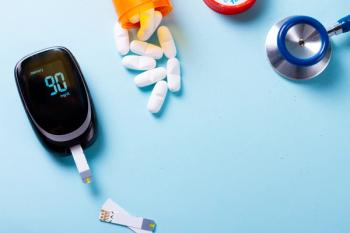
Improving Glycemic Markers in Children with Type 1 Diabetes Using Technology
Software updates in closed-loop systems may lead to better time in range numbers for children with type 1 diabetes.
Time in range is 1 of the most effective ways to measure glycemic control in patients who have type 1 diabetes (T1D). Closed-loop glucose control systems have led to improvement of that metric, with some systems reporting an increase of up to 9% in pediatric cases—a significant increase as this population may struggle with hitting glycemic control targets.
In a study published in JAMA Network Open,1 researchers examined whether a software update led to even better time within range.
Patients aged 6 to 17 with T1D who utilized a closed-loop system with carbohydrate counting were invited to participate in the research (n=43; time since T1D diagnosis, range, 2-13 years). Participants were given an updated closed-loop system, and shared data through data-syncing software. At the start of the study, participants attended Zoom sessions for 3 days, either doing exercise sessions led by personal trainers or watching information sessions. Following this 3-day program, they updated the software on their system. Researchers looked at the time in range 1 week and 3 weeks before and after the updates.
Following the update, there was a significant increase in time in range compared with the previous system after the first week (median, 75% [IQR, 70%-82%] vs 64% [IQR, 54%-74%]; P <.001), and remained steady for the entire 3-week observation period at a median of 76% (IQR, 69%-82%). After 1 week, time in range was a median 11% higher after the update and 12% higher after 3 weeks. Neither severe hypoglycemia not diabetic ketoacidosis were seen during the study period. Furthermore, no increase in time below range was seen.
The researchers noted that they could not separate the individual ties between education and technology with the time in range. Additionally, many participants were already using advanced technology and had high baseline time in range, which may impact generalizability of the results. Further research in children and teenagers who have lower baseline time in research could remove this potential issue.
Reference
Marigliano M, Scaramuzza AE, Bonfanti R, et al.
Newsletter
Pharmacy practice is always changing. Stay ahead of the curve with the Drug Topics newsletter and get the latest drug information, industry trends, and patient care tips.




































































































































